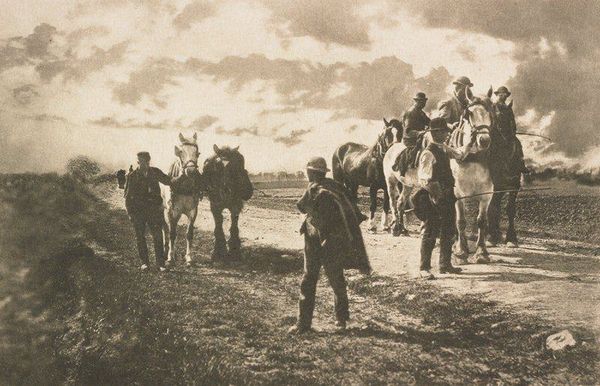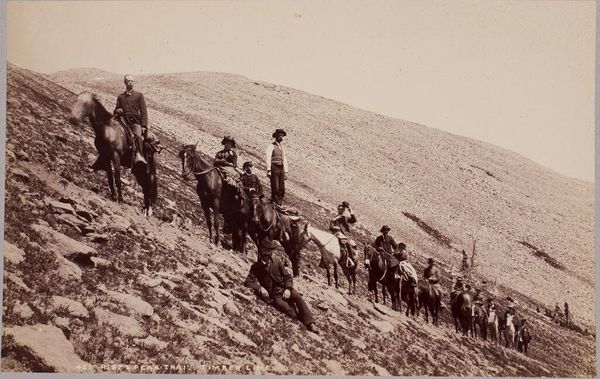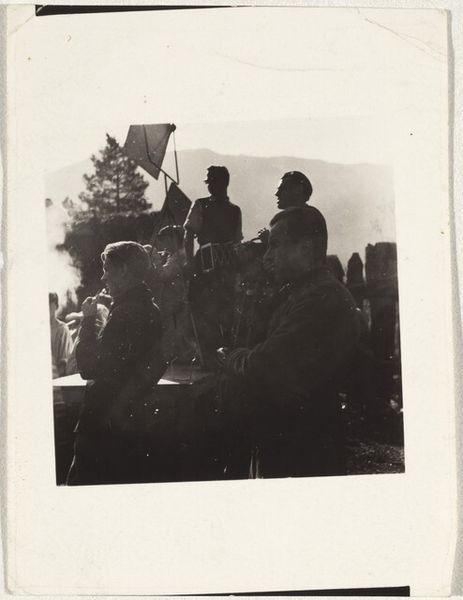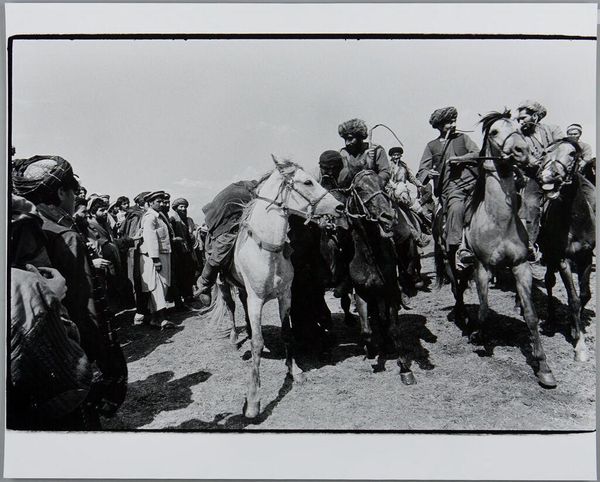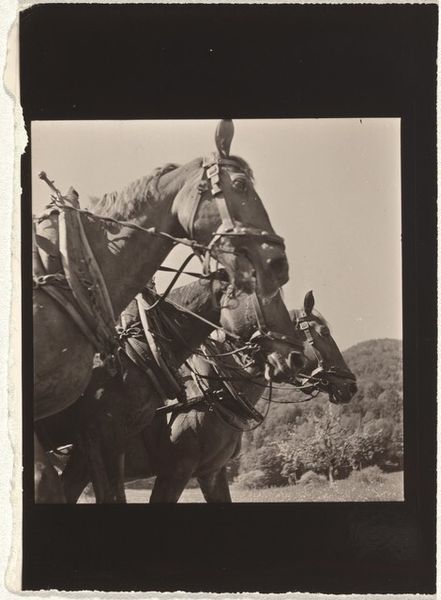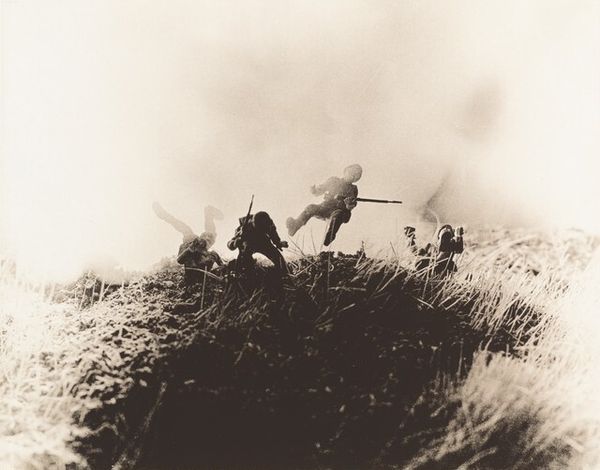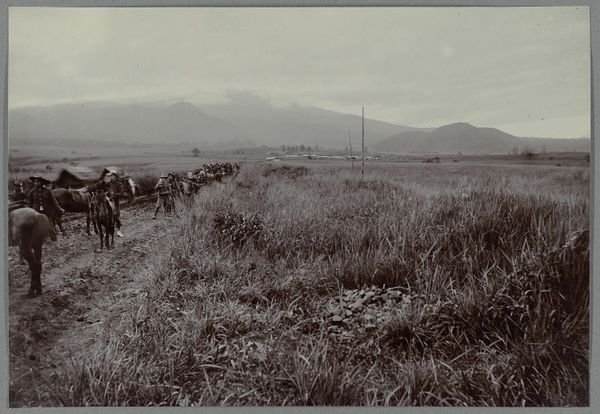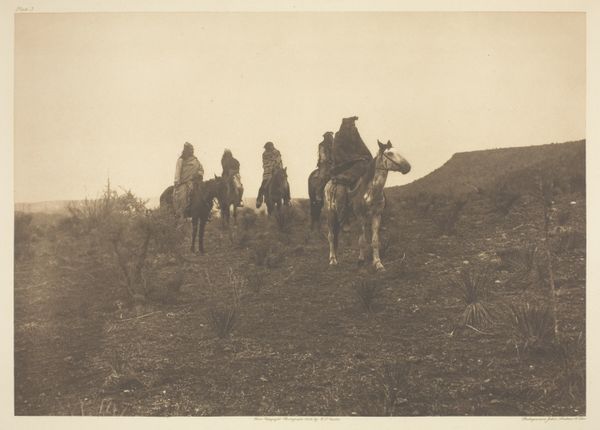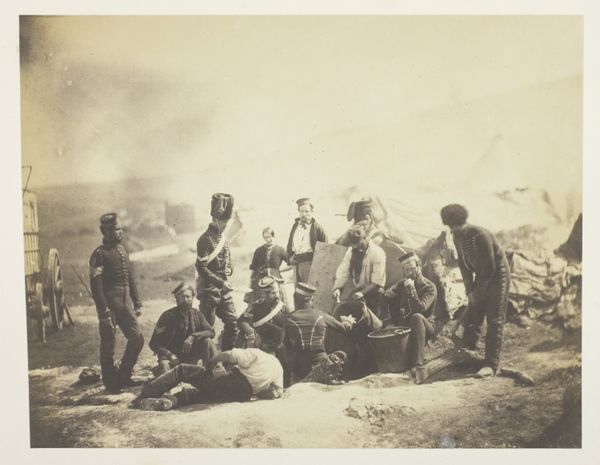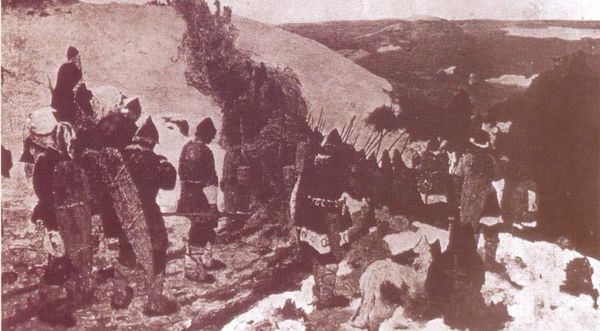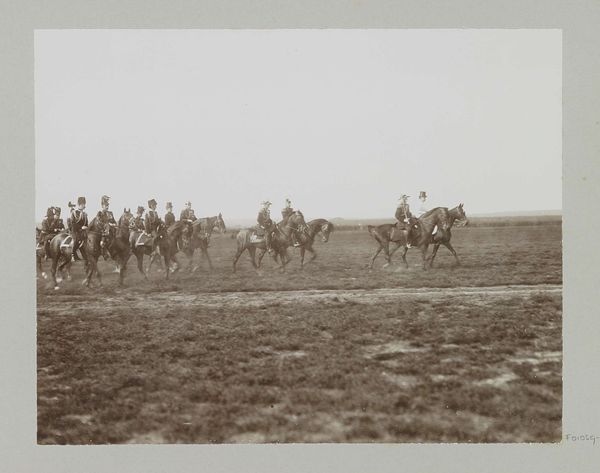
photography, gelatin-silver-print
#
black and white photography
#
landscape
#
black and white format
#
photography
#
photojournalism
#
black and white
#
gelatin-silver-print
#
monochrome photography
#
monochrome
#
realism
#
monochrome
Dimensions: image: 11.75 × 35 cm (4 5/8 × 13 3/4 in.) sheet: 35.56 × 43.18 cm (14 × 17 in.)
Copyright: National Gallery of Art: CC0 1.0
Editor: This is "Mujahideen, Afghanistan," a black and white photograph by Ed Grazda taken in 1983. It depicts a group of Afghan Mujahideen on a hillside. The composition feels almost staged, everyone arranged just so, but the stark reality of the scene is undeniable. What can you tell me about the context surrounding this image? Curator: Well, it’s crucial to understand the socio-political landscape of 1980s Afghanistan. The Soviet-Afghan War was raging, and the Mujahideen, backed by various international powers, were resisting the Soviet invasion. This photograph, as a piece of photojournalism, participates in the representation and framing of that conflict for a global audience. Editor: So, this image is more than just a depiction of people? It’s a political statement? Curator: Perhaps “statement” is too strong. Think of it as a visual document that is always already interpreted. Consider how the photographer's choices - the angle, the composition, even the decision to shoot in black and white - influence how the West perceived the Afghan resistance. Were these images meant to garner sympathy, support, or perhaps something more complicated? How does the romantic landscape play into a complex geo-political stage? Editor: I see your point. The stark contrast adds to the severity of the scene. I was initially drawn to the aesthetic, but now I realize its historical importance. Curator: Precisely! Art, even in its documentary forms, isn't neutral. It operates within and reinforces specific ideological frameworks. Consider how the very act of representing the Mujahideen as a unified front, regardless of the complex internal dynamics, shapes the narrative of the war. Editor: That makes me reconsider what I initially perceived. Thanks! I learned a lot today. Curator: As did I! It is essential to understand how social narratives and public images influence history.
Comments
No comments
Be the first to comment and join the conversation on the ultimate creative platform.
